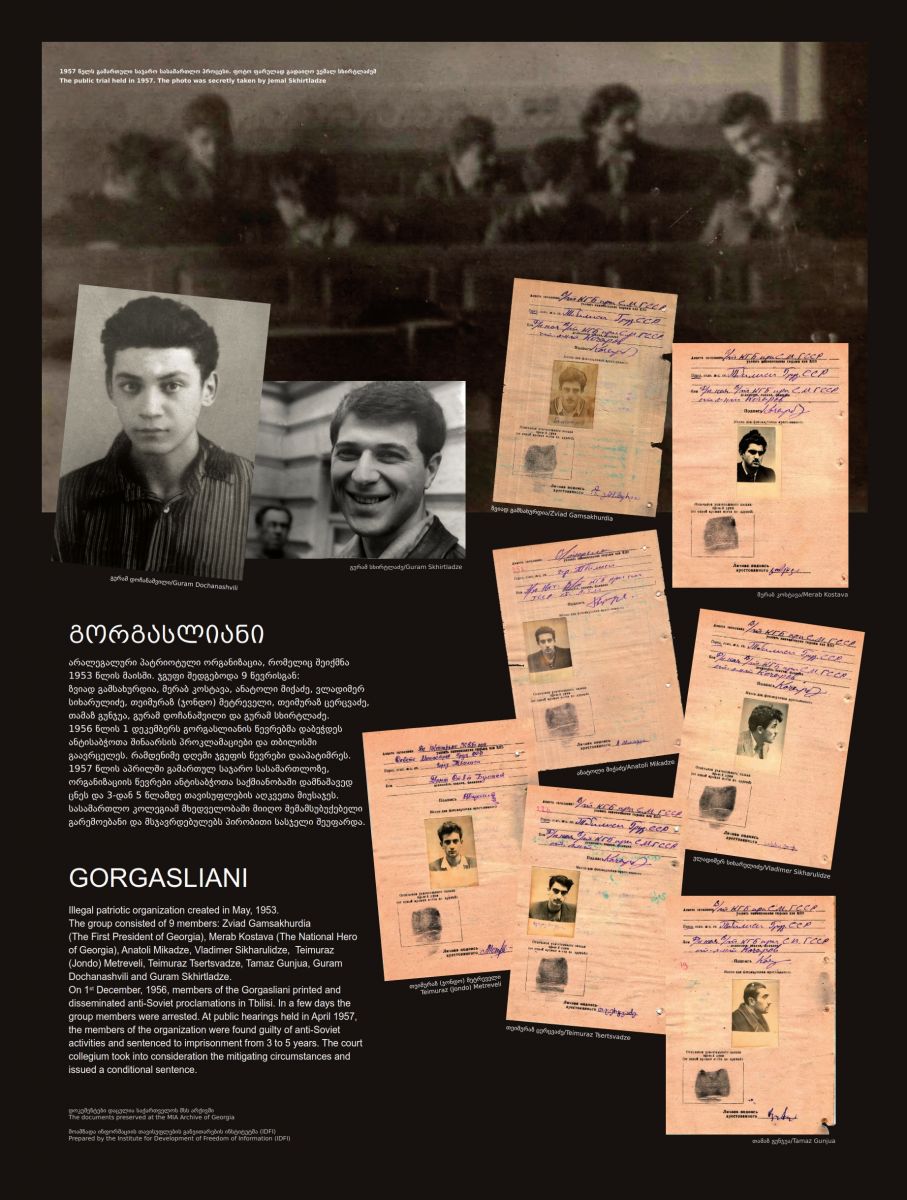With the initiative of the Institute for Development of Freedom of Information (IDFI) and support of the Archive of the Ministry of Internal Affairs of Georgia, the Gorgasliani stand at the exhibit on Soviet occupation at the Georgian National Museum was renewed.
Gorgasliani was an illegal patriotic organization created in May, 1953. The group consisted of 9 members: Zviad Gamsakhurdia, Merab Kostava, Anatoli Mikadze, Vladimer Sikharulidze, Teimuraz (Jondo) Metreveli, Teimuraz Tsertsvadze, Tamaz Gunjua, Guram Dochanashvili and Guram Skhirtladze.
On December 1, 1956, members of the Gorgasliani printed anti-Soviet proclamations and disseminated them in Tbilisi. In a few days the group members were arrested. At public hearings held in April 1957, the members of the organization were found guilty of anti-Soviet activities and sentenced to imprisonment from 3 to 5 years. The court collegium took into consideration the mitigating circumstances and sentenced the convicts a conditional sentence.

The exhibition of Soviet Occupation was opened on May 26, 2006. The Soviet Occupation exhibition represents seven decades of Soviet rule in Georgia (1921-1991). It is also dedicated to the history of anti-occupation, national-liberation movement of Georgia and to the victims of Soviet political repression throughout this period, with up to 3,000 exhibits.
The Gorgasliani stand was not complete in its depiction of all members. IDFI searched the criminal cases of members of this organization at the Ministry of Internal Affairs of Georgia, and found criminal records of 7 members with photographs. Photos of Guram Dochanashvili and Teimuraz Skhirtladze were added from their family archives as well. In the end, the updated stand contains adjusted information about Gorgasliani, as well as the photos of all of its members.
IDFI and the National Museum will cooperate in the future in order to make the exhibition reflecting the Soviet occupation more complete, exposing the newly discovered archive sources and updating the information presented on the stands.
___

Publication of this article was financed by the Open Society Institute Budapest Foundation (OSI) within the frame of the project - Enhancing Openness of State Archives in Former Soviet Republics and Eastern Bloc Countries. The opinions expressed in this document belong to the Institute for Development of Freedom of Information (IDFI) and do not reflect the positions of Open Society Institute Budapest Foundation (OSI). Therefore, OSI is not responsible for the content.






